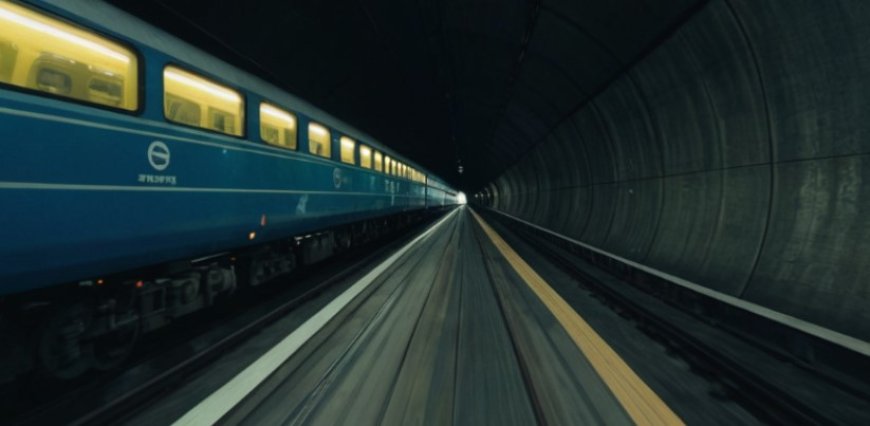Groundbreaking Underwater Seismic Study Propels Spain-Morocco Tunnel Project Forward
A new underwater seismic study marks significant progress in the ambitious Spain-Morocco submarine tunnel project. The 42-kilometer tunnel, estimated to cost 6 billion euros, aims to connect Europe and Africa, potentially transforming trade and travel between the continents. SECEGSA has commissioned a six-month study using advanced Ocean Bottom Seismometers to assess geological conditions in the Strait of Gibraltar. The project, designed with two main tunnels and a service tunnel, is expected to handle 12.8 million passengers and 13 million tons of goods annually. While facing technical and environmental challenges, the tunnel represents a major step in international cooperation and engineering advancement, with completion projected between 2035-2037.

In a significant leap towards realizing the ambitious dream of connecting Africa and Europe, the Spanish Society for Fixed Communication Studies across the Strait of Gibraltar (SECEGSA) has announced the launch of a new underwater seismic study for the Spain-Morocco submarine tunnel project. This monumental endeavor, estimated to cost around 6 billion euros, aims to create a 42-kilometer underwater link that promises to revolutionize transportation and trade between the two continents.
Key Highlights of the Project:
- Total length: 42 kilometers
- Estimated cost: 6 billion euros
- Expected annual capacity: 12.8 million passengers and 13 million tons of goods
- Connection points: Punta Paloma (Tarifa, Spain) to Malabata (near Tangier, Morocco)
Seismic Study Details
SECEGSA has issued a call for tenders to lease four Ocean Bottom Seismometers (OBS) with a purchase option. These sophisticated devices, to be developed by the geophysics department of the Spanish Military Observatory (ROA), will measure seismic activity on the seafloor for a period of six months.
| Study Aspect | Details |
|---|---|
| Duration | 6 months |
| Equipment | 4 Ocean Bottom Seismometers (OBS) |
| Contract Value | 487,872 euros |
| Developing Agency | Spanish Military Observatory (ROA) |
Dr. Elena Rodriguez, a leading geophysicist involved in the project, emphasizes the importance of this study: "Understanding the seismic behavior of the Strait of Gibraltar is crucial for the safety and longevity of the tunnel. This study will provide invaluable data to inform our engineering decisions."
Tunnel Design and Route
After extensive technical studies, the chosen route will connect Punta Paloma in Tarifa, Spain, to Malabata near Tangier, Morocco. The project's design includes:
- Two single-track tunnels, each with a diameter of 7.9 meters
- A service tunnel with a 6-meter diameter
- Cross-passages every 340 meters for maintenance and emergency access
"This design optimizes safety and efficiency," explains Chief Engineer Carlos Mendoza. "The cross-passages are particularly crucial for rapid response in any unforeseen circumstances."
Expected Impact
The completion of this tunnel is anticipated to have far-reaching effects:
- Economic Boost: Facilitating the transport of 13 million tons of goods annually will significantly enhance trade between Europe and Africa.
- Tourism Surge: With 12.8 million passengers expected to use the tunnel yearly, tourism in both Spain and Morocco is set to flourish.
- Cultural Exchange: Easier travel will promote greater cultural understanding and cooperation between the continents.
- Job Creation: The project will generate thousands of jobs during construction and operation phases.
Challenges and Prospects
While excitement surrounds the project, significant technical and geological challenges remain. The new seismic study is a critical step in addressing these challenges.Professor Ahmed El Fassi, an expert in geotechnical engineering, states, "This study will enable us to better understand the seismic challenges the project may face, allowing us to develop innovative engineering solutions to ensure the tunnel's long-term safety."
Environmental Considerations
The project team is keenly aware of the environmental sensitivities of the Strait of Gibraltar. "We're conducting thorough environmental impact assessments," says Dr. Maria Gomez, the project's lead environmental scientist. "Our goal is to minimize disruption to marine ecosystems while delivering this transformative infrastructure."
Historical Context and Future Vision
The idea of a fixed link between Europe and Africa dates back to the 19th century. However, it's only now, with advanced engineering capabilities and strong political will, that this dream is approaching reality.Spanish Transport Minister Ana Belén shares her vision: "This tunnel represents more than just a physical connection. It's a symbol of cooperation, progress, and shared aspirations between our continents."
Timeline and Next Steps
| Phase | Expected Timeline |
|---|---|
| Seismic Study Completion | Early 2025 |
| Final Design Approval | Mid 2026 |
| Construction Start | Late 2027 |
| Projected Completion | 2035-2037 |
"While these timelines are ambitious, they reflect our commitment to bringing this project to fruition as swiftly and safely as possible," states SECEGSA Director Juan Carlos Martínez.
Conclusion
As studies and research progress, the world edges closer to witnessing the realization of a centuries-old dream. The Spain-Morocco submarine tunnel project is more than just an engineering marvel; it's a testament to international cooperation and technological advancement.The new seismic study marks a crucial step forward, providing essential data to ensure the safety and feasibility of this monumental undertaking. As work continues, all eyes are on the day when this ambitious dream will become a tangible reality, opening new horizons for development and connection between peoples.The project stands as a beacon of progress, promising to reshape trade, travel, and cultural exchange between Europe and Africa. As we move forward, the Spain-Morocco tunnel serves as a powerful reminder of humanity's ability to overcome geographical barriers and build bridges – or in this case, tunnels – towards a more connected future.

